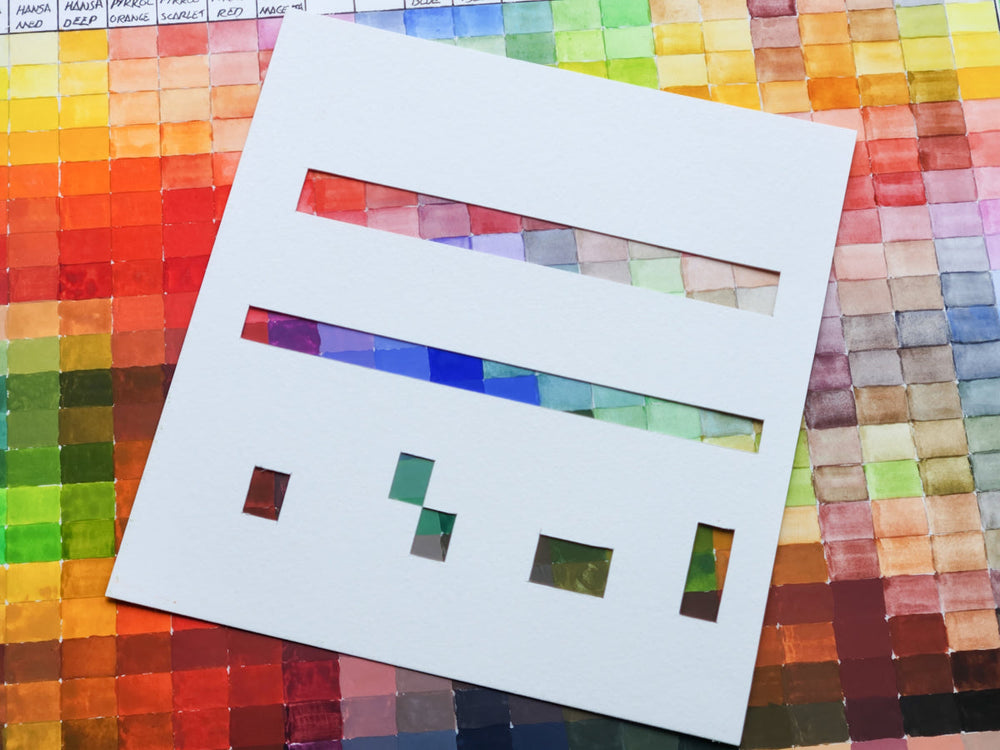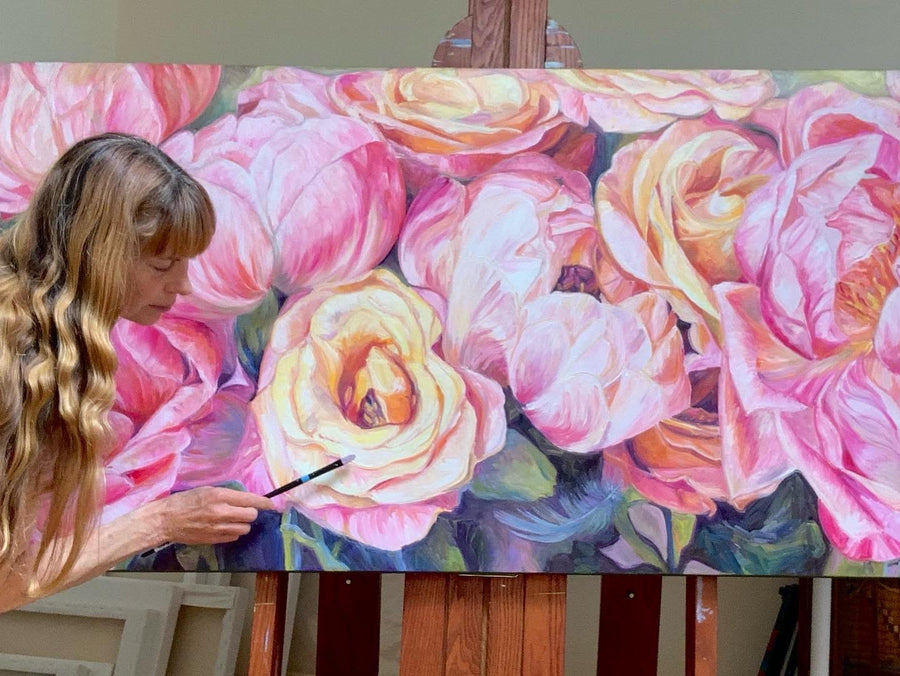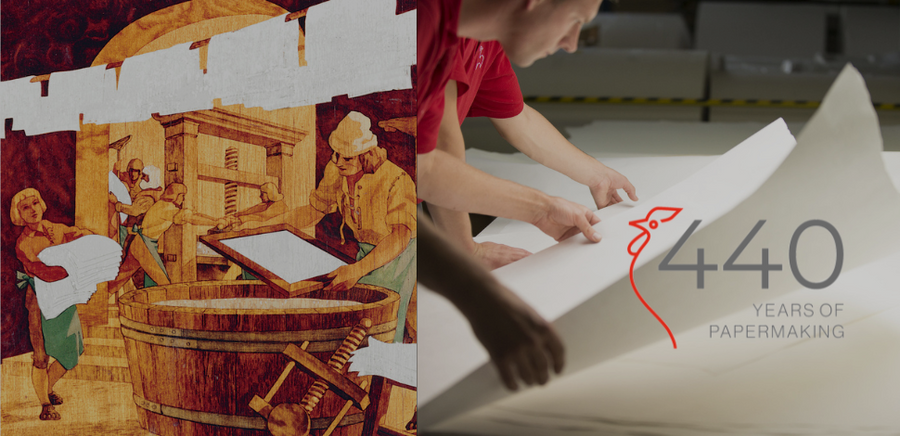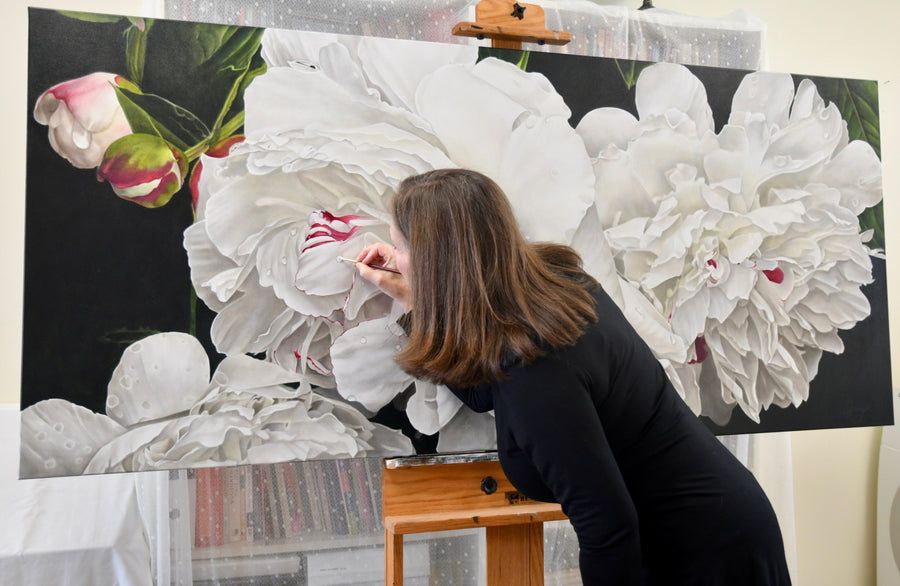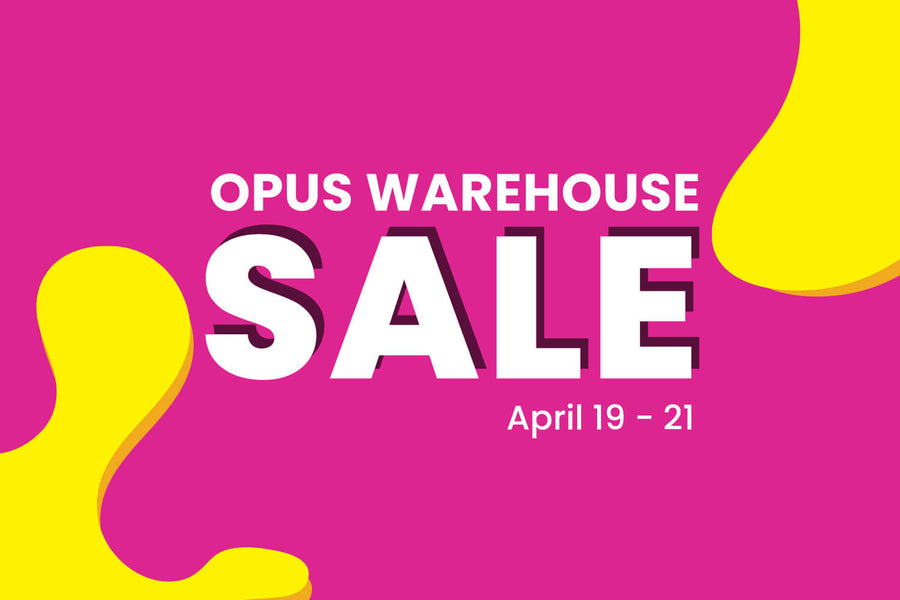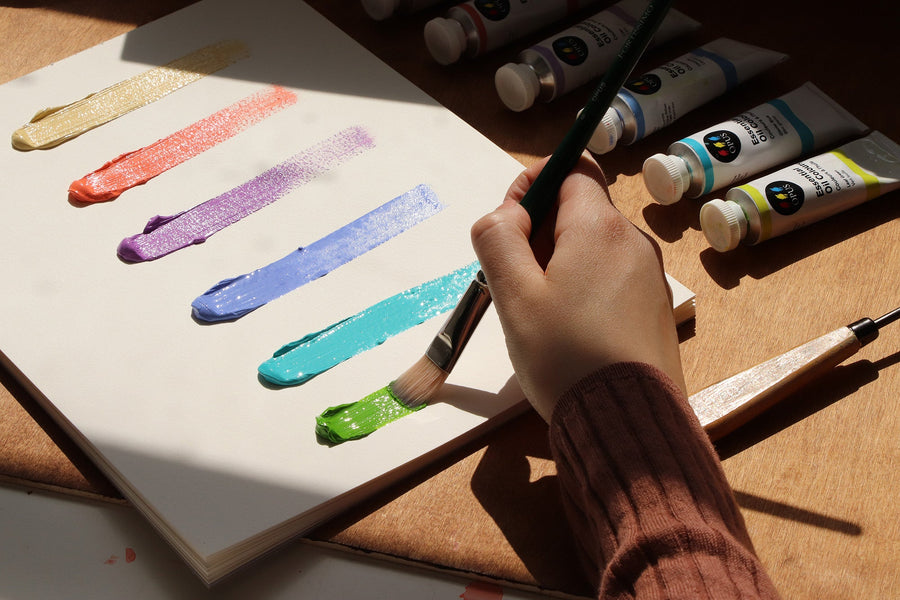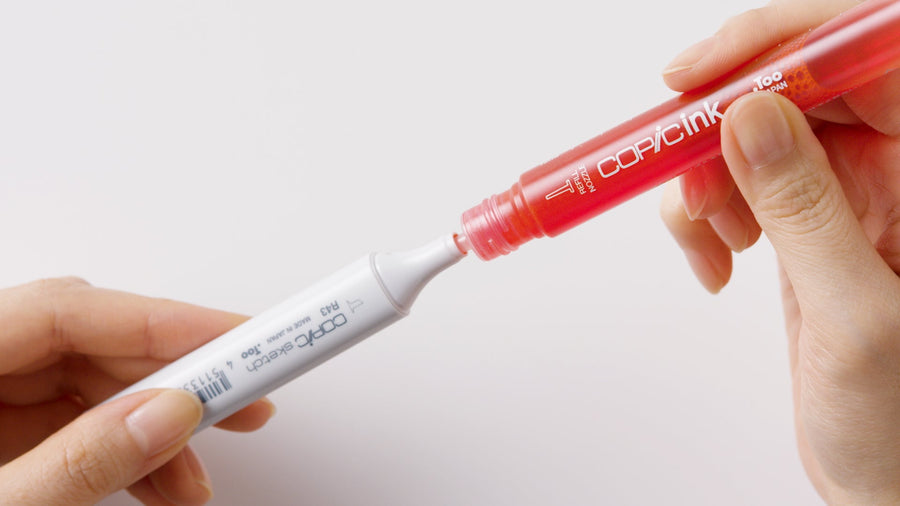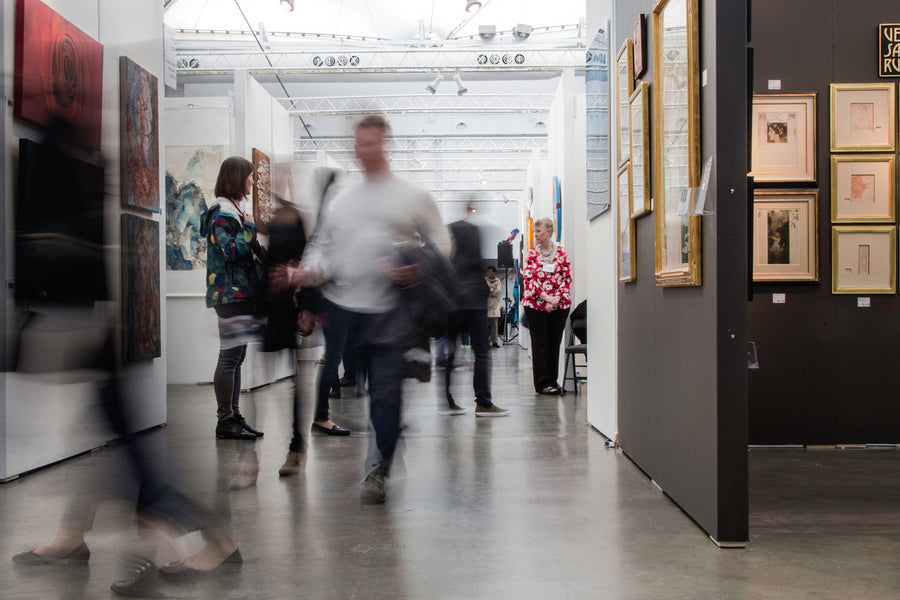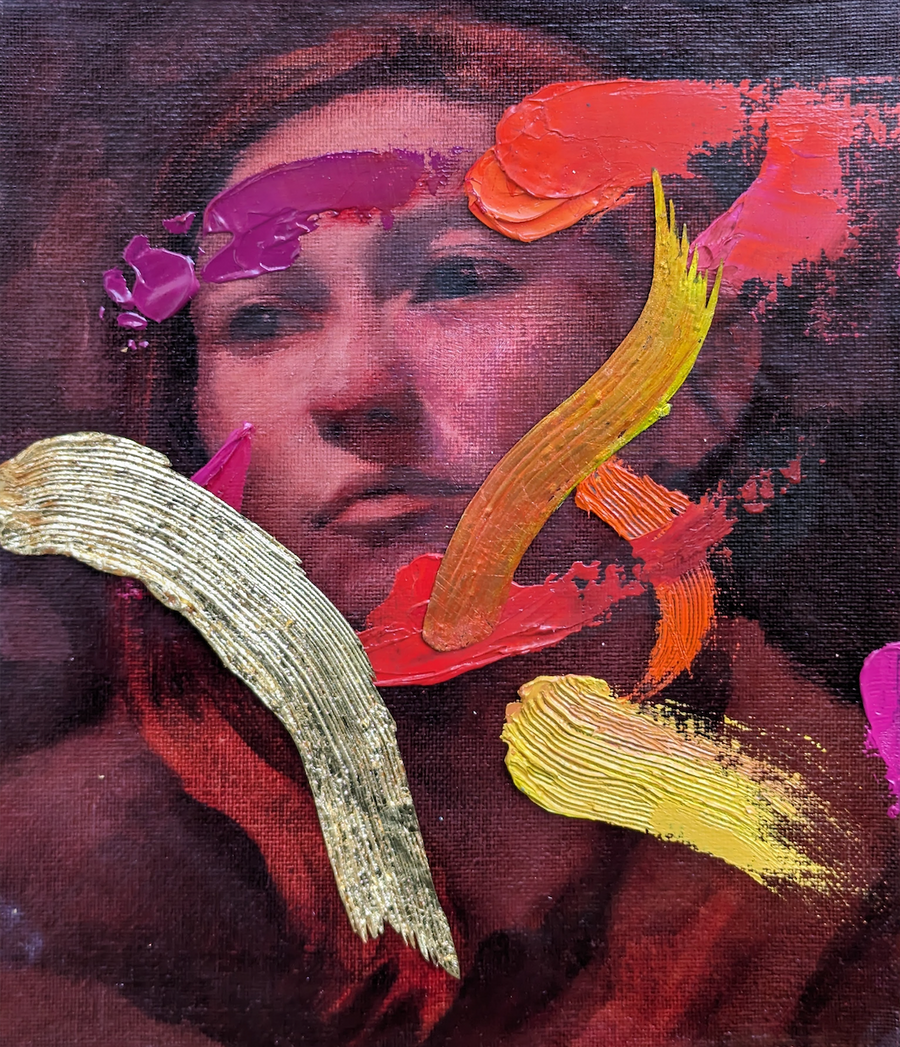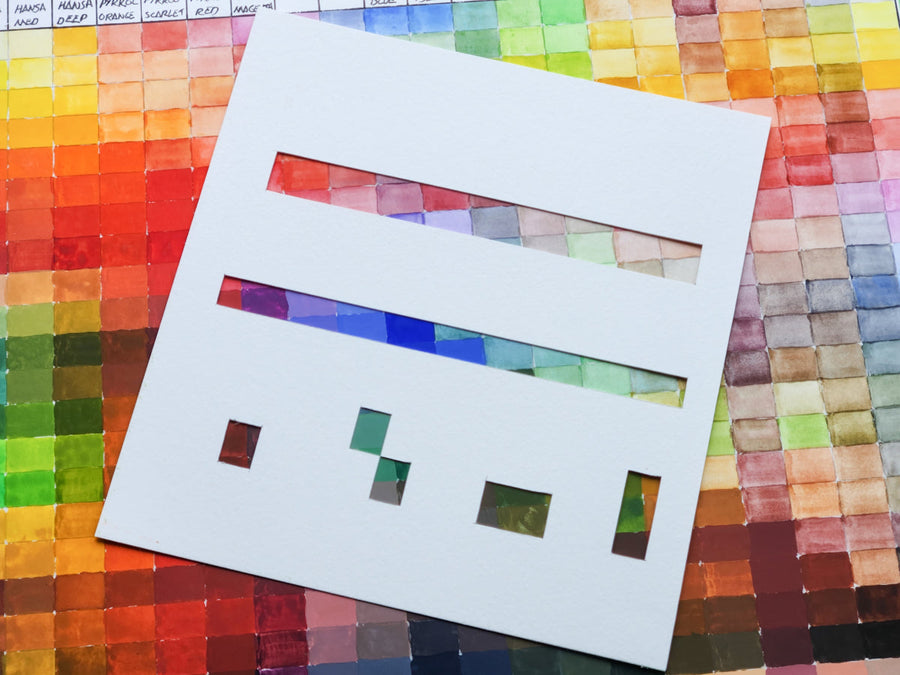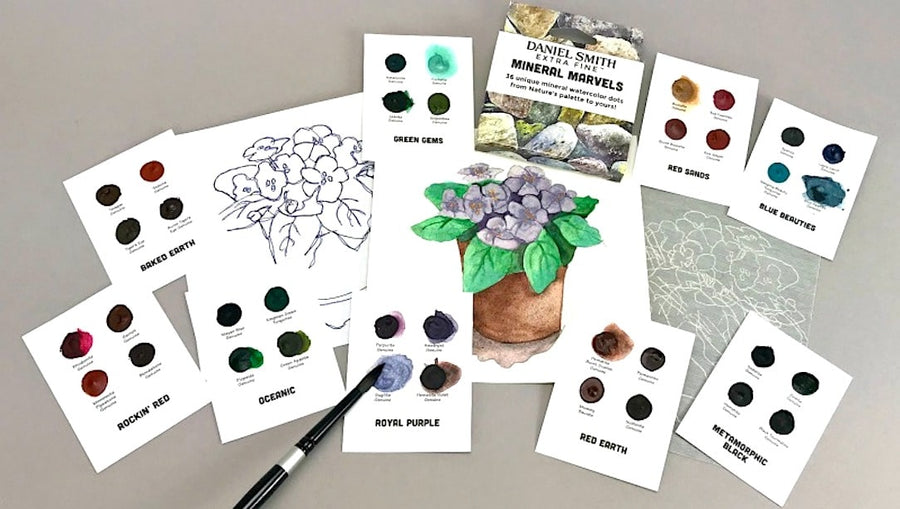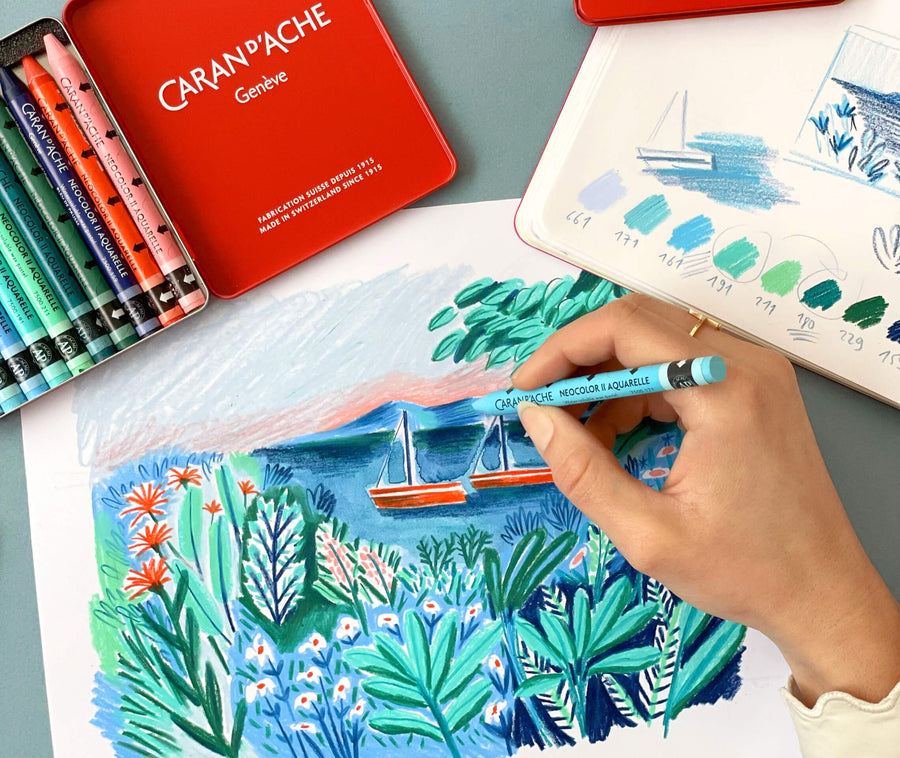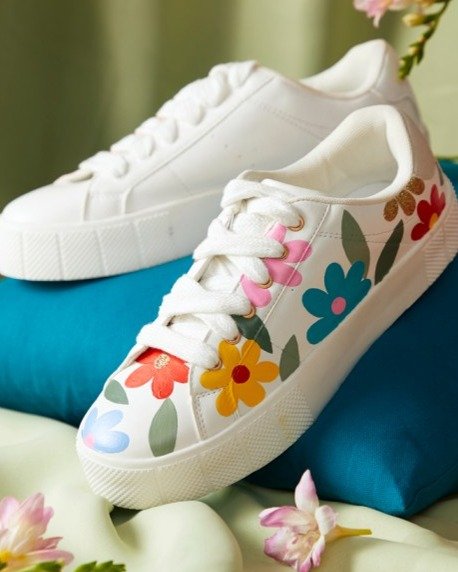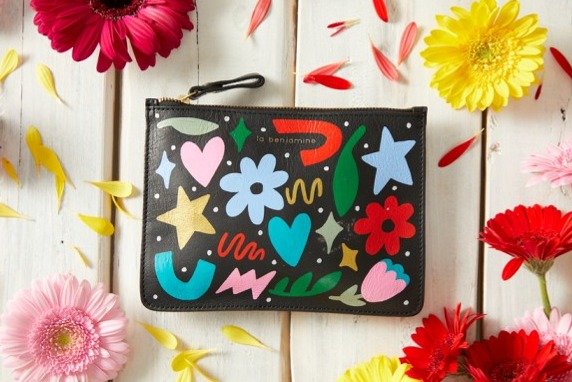Hey there, creative souls! Ready to amp up your artistic game with some Daniel Smith Gouache magic? If you're itching to blend, mix, and conjure up an array of stunning hues, you're in the right place.
Today, we're zeroing in on a must-have tool for any artist's arsenal – a colour mixing chart. And not just any chart, but one that showcases the vibrant, creamy, and rich textures of Daniel Smith Gouache paints. Whether you are just getting started or a professional, this exercise is a great way to get to know how your colours interact with each other and the possibilities for mixing.
So, let's get those watercolour brushes wet and colours flying!

Creating Your Color Mixing Chart:
A Step-by-Step Journey
1. Kickstarting Your Chart
Begin with a sturdy piece of watercolour paper, large enough to host your new gouache colours, in this case, we are doing 22 colours which will swatch out to 484 swatches. This will be the grid where your swatches will come to life, offering a rainbow of possibilities at a glance!

2. Grid It Up
With a ruler and pencil, sketch out a grid with the columns and rows for the number of colours you'd like on your chart.
For example, if you have 22 colours like us, do 22 rows and 22 columns.
Label the rows and columns with your colours in chromatic order – you'll thank yourself later!

3. Laying the Foundation
Now for some painting fun! We like to start with laying down the pure colours on our mixing chart.
For this, you'll paint the squares with the pure colour. You'll notice the pure colour lines up diagonally across your chart - where the row and the column for the same colour meet!

4. Mixing and Matching
Now for the most valuable part of the mixing chart, the mixing! For each intersecting column and row, mix the corresponding colours as indicated in their headings.
You'll notice you have two opportunities for each colour mixture. One above the diagonal, and one below. In this example, you'll find a pure 1:1 mixture below the diagonal. Above the diagonal, you'll see a lighter tone which is the 1:1 mixture with additional water added. You could also choose to mix in a little white or black to show lighter or darker tones.

5. Navigating Your Mixing Chart
Once you've swatched out all the squares for your mixing chart, you'll already an idea of how these colours play together!
Howver, to make it easier to navigate, you could create a mixing chart mask with cardstock. For this, take the cardstock and cut out squares or strips and use them to isolate colour combinations on your mixing chart.

Why Bother with a Mixing Chart?
Imagine having a visual Google for colors, where every search reveals how two hues interact. That's your mixing chart. It's not just about pretty swatches; it's a tool that:
- Boosts Confidence: Know at a glance which colours will sing in harmony and which will clash, saving you from potential mishaps in your artwork.
- Inspires Creativity: Stuck in a colour rut? Your chart is a treasure trove of new combinations to try, pushing your creative boundaries.
- Saves Time: No more guessing or unnecessary mixing. Your chart is a quick reference that speeds up your creative process, letting you focus on the fun parts of painting.
Your Mixing Chart, Your Creative Compass
Creating a colour mixing chart with Daniel Smith Gouache isn't just an exercise; it's a journey into the heart of colour theory, a tool that empowers your artistic voice. So, whether you're plotting your next masterpiece or just dabbling with hues, let your chart be your guide, your muse, and your map in the vibrant world of colour.
